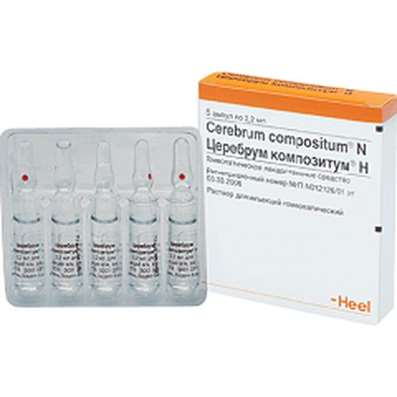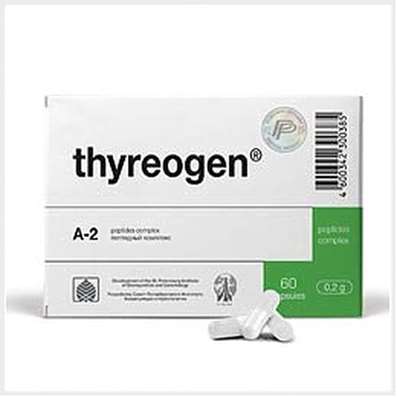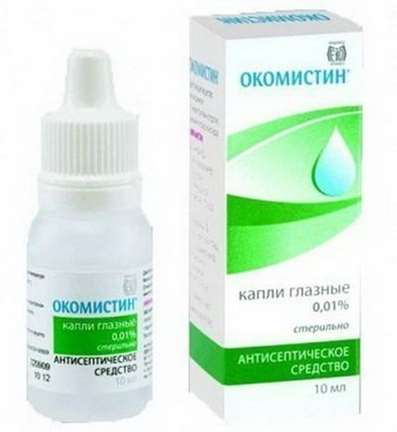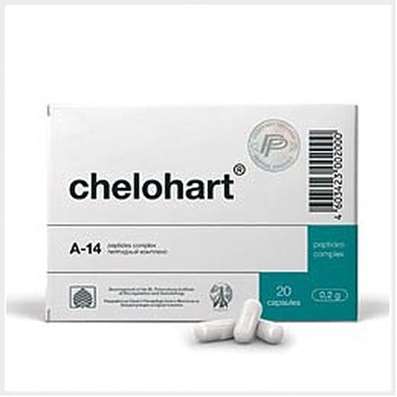Instruction for use: Sermion
I want this, give me price
Trade name of the drug – Sermion
Active substance: Nicergolinum
Dosage Form: Tablets 5 mg: round, convex, film-coated orange.
Tablets, 10 mg: round, convex, film-coated white.
Tablets 30 mg: Round, biconvex, coated yellow.
Lyophilisate: freeze-dried powder or porous mass of white.
Solvent: clear, colorless liquid.
Composition (per tablet):
Nicergoline - 5 mg
excipients: calcium hydrogen phosphate dihydrate - 100 mg; MCC - 22.4 mg; Magnesium stearate - 1.3 mg; sodium carboxymethyl cellulose - 1.3 mg
shell sugar: Sucrose - 33.35 mg; Talc - 10.9 mg; acacia gum - 2.7 mg; sandarac resin - 1 mg; magnesium carbonate - 0.7 mg; titanium dioxide (E171) - 0.7 mg; Rosin - 0.6 mg; Carnauba wax - 0.06 mg; "Sunset" yellow (E110) - 0.05 mg
Nicergoline - 10 mg
excipients: calcium hydrogen phosphate dihydrate - 94.3 mg; MCC - 22.4 mg; magnesium stearate - 2 mg; sodium carboxymethyl cellulose - 1.3 mg
shell sugar: sucrose - 33.4 mg; Talc - 10.9 mg; acacia gum - 2.7 mg; sandarac resin - 1 mg; magnesium carbonate - 0.7 mg; titanium dioxide (E171) - 0.7 mg; Rosin - 0.6 mg; Carnauba wax - 0.06 mg
Nicergoline - 30 mg
excipients: calcium hydrogen phosphate dihydrate - 72.69 mg; MCC - 22.4 mg; magnesium stearate - 3.61 mg; sodium carboxymethyl cellulose - 1.3 mg
shell film: Valium - 2.8985 mg; titanium dioxide (E171) - 0.7246 mg; polyethylene glycol 6000 - 0.2899 mg; iron oxide yellow (E172) - 0.0725 mg; silicone - 0.0145 mg
Valium for solution for injection - 1 vial.
active substance: 4 mg nicergoline
Excipients: lactose monohydrate; wine acid
The solvent is 1 amp.
sodium chloride; benzalkonium chloride; water for injections
Pharmacotherapeutic group:
Alpha-blocker [alpha-blockers]
Alpha-blocker [Corrector disturbance of cerebral circulation]
ATX C04AE02 Nicergoline
The nosological classification (ICD-10)
F01 Vascular dementia: Cerebrovascular dementia
G44.1 Vascular headache, not elsewhere classified: Arteriogipotonichesky option headaches; Pain of vasogenic; Vasomotor headache; Headache vascular genesis; Headache vascular origin
G45 Transient transient cerebral ischemic attacks [attacks] and related syndromes: Ischemic neurological disorders; Acute cerebrovascular insufficiency; Repeated transient cerebral ischemia; Transient ischemic attack; Transient ischemic condition; Transient ischemic attack; Transient ischemic attack; transient ischemia; Transient cerebral ischemic attack; Transient cerebral ischemia; Transient ischemic attacks; Chronic cerebral ischemia; Drop attacks; Transient ischemic attacks; Transient ischemic cerebrovascular accident; Ischemic brain damage; Subclavian steal syndrome
G46 Vascular syndromes of brain in cerebrovascular diseases: Postapopleksicheskoe state; Chronic cerebrovascular insufficiency
G93.9 brain damage, unspecified: Lesions of the higher brain functions of the cerebral hemispheres; Anizorefleksiya; Age-related changes in the brain involutional; Metabolic disturbances of brain; Metabolic and cerebrovascular disorders; cerebral insufficiency
I10 Essential (primary) hypertension: hypertension; Arterial hypertension; Arterial hypertension crisis course; Essential Hypertension; Essential hypertension; Essential hypertension; Essential hypertension; Essential hypertension; Primary hypertension; Arterial hypertension, complications of diabetes; The sudden increase in blood pressure; Hypertensive disorders of blood circulation; hypertensive condition; hypertensive crises; arterial Hypertension; malignant Hypertension; Hypertonic disease; hypertensive crises; accelerated hypertension; malignant hypertension; The aggravation of hypertensive disease; Transient hypertension; Isolated systolic hypertension
I15 Secondary hypertension: Arterial hypertension, complications of diabetes; hypertension; The sudden increase in blood pressure; Hypertensive disorders of blood circulation; hypertensive condition; hypertensive crises; hypertension; arterial Hypertension; malignant Hypertension; hypertensive crises; accelerated hypertension; malignant hypertension; The aggravation of hypertensive disease; Transient hypertension; hypertension; Arterial hypertension; Arterial hypertension crisis course; renovascular hypertension; Hypertension symptomatic; Renal hypertension; Renovascular hypertension; renovascular hypertension; Symptomatic hypertension
I63 Cerebral infarction: ischemic Stroke; Ischemic brain disease; Ischemic stroke; Ischemic stroke and its consequences; Ischemic cerebral stroke; Ischemic cerebrovascular accident; Ischemic brain damage; Ischemic brain damage; ischemic conditions; Cerebral ischemia; Acute hypoxia brain; Acute cerebral ischemia; Acute ischemic cerebrovascular accident; Acute cerebral infarction; Acute ischemic stroke; Acute period of ischemic stroke; Focal cerebral ischemia; Ischemic stroke; recurrent stroke; The syndrome of Morgagni-Adams-Stokes; Chronic cerebral ischemia; cerebrovascular stroke; embolic stroke; Ischemic brain damage
I66.9 Occlusion and stenosis of cerebral arteries, unspecified: Thrombosis of cerebral arteries; Thrombosis of the cerebral vessels; Cerebral thrombosis; Thrombosis of the cerebral vessels; Thromboembolism cerebral vessels; Embolism of cerebral vessels; Cerebral embolism; Stenosis of cerebral arteries
I67.2 Cerebral atherosclerosis: Atherosclerosis of the arteries of the brain; Atherosclerosis of cerebral vessels; Atherosclerotic changes in cerebral vessels; Vascular diseases of the brain; Sclerotic ischemic attacks; Sclerosis of cerebral vessels
I73.0 Raynaud's Syndrome: Raynaud's syndrome Leriche; Raynaud's disease; Raynaud's phenomenon; RaynaudLeriche syndrome; Raynaud's disease; Raynaud's syndrome with trophic disorders; Peripheral angiopathy
I73.8 Other specified peripheral vascular disease: Syndrome of intermittent claudication; endarteritis obliterans; acrocyanosis; vasoconstriction; occlusive disease; Intermittent claudication; Disorders of vascular innervation; Spasm of peripheral arteries; Arterial angiopathy; Venous insufficiency and its complications; Spasm of peripheral vessels; The spasm of coronary vessels; endarteritis; cooling stop; Occlusal disorders of peripheral circulation; Peripheral vascular occlusion
I73.9 Peripheral vascular disease, unspecified: angiospasm; Vasospasm / vasoconstriction; vasospastic disorders; Violation of venous microcirculation; Violation of circulation; Violation of peripheral blood circulation; of peripheral blood circulation in the lower and upper limbs; Peripheral arterial occlusive disease; Peripheral arterial occlusive disease in stages III-IV on Fontaine; Peripheral vascular insufficiency; Peripheral vascular lesions; Peripheral vascular disorders; Peripheral circulatory disorder; spasm of artery; angiospasm; Functional peripheral arterial disease; Chronic occlusive disease; Chronic obliterating diseases of the lower limbs; Chronic arterial occlusive disease
Pharmacological Properties of Sermion
Pharmachologic effect - Mode of action - alpha adrenolytic.
Pharmacodynamics
Nicergoline - ergoline derivative improves hemodynamic and metabolic processes in the brain, decreases platelet aggregation and improve hemorheological parameters of blood, increases blood flow in the upper and lower extremities. Nicergoline exhibits α1-adrenoceptor blocking action, leading to an improvement in blood flow, and has a direct effect on cerebral neurotransmitter systems - adrenergic, dopaminergic and cholinergic. Against the background of the drug increased the activity of adrenergic, dopaminergic and cholinergic cerebral systems that helps to optimize cognitive processes. As a result, long-term therapy nicergoline seen sustained improvements in cognitive function and decrease the severity of behavioral disturbances associated with dementia.
Pharmacokinetics
After oral administration, nicergoline is rapidly and almost completely absorbed. Major metabolites nicergoline: 1,6-dimethyl-8β-hydroxymethyl-10α-metoksiergolin (MMDL, hydrolysis product) and 6-methyl-8β-hydroxymethyl-10α-metoksiergolin (MDL, demethylation product under the action of the isoenzyme CYP2D6). The ratio of AUC values for MMDL MDL and by ingestion and / in the introduction of nicergoline indicates a pronounced first-pass metabolism in. After receiving 30 mg of nicergoline inside Cmax MMDL - (21 ± 14) ng / ml MDL - (41 ± 14) ng / mL, Tmax - 1 and 4 hours, respectively, and then decreased with the concentration of MDL T1 / 2 of 13-20 hours. Studies confirm the absence of accumulation of other metabolites (including MMDL) in the blood. Eating or dosage form does not significantly affect the extent and rate of absorption of nicergoline. Nicergoline active (> 90%) binds to plasma proteins, and its degree of affinity for the α-acid glycoprotein more than serum albumin. It is shown that nicergoline and its metabolites are distributed in blood cells. Pharmacokinetics nicergoline at doses up to 60 mg is linear and does not vary depending on the patients age.
Nicergoline is displayed in the form of metabolites, mostly urine (about 80% of the total dose) in a small amount (10-20%) - with the feces. In patients with severe renal failure showed a significant reduction in the degree of removal of metabolic products in the urine as compared to patients with normal renal function.
Indications for Sermion
acute and chronic cerebral metabolic and vascular disorders (due to atherosclerosis, hypertension, thrombosis or cerebral embolism, including transient cerebral attack, vascular dementia, and headache caused by vasospasm);
acute and chronic peripheral metabolic and vascular disorders (organic and functional arteriopathy extremities, Raynaud's disease, syndromes, peripheral blood flow caused by violation);
as an adjunct in the treatment of hypertensive crises (parenteral).
Contraindications for Sermion
Common for all dosage forms
hypersensitivity to nicergoline and / or other components of the drug;
acute bleeding;
acute myocardial infarction;
orthostatic hypotension;
bradycardia.
Additionally for coated tablets
deficit sucrase / isomaltase, fructose intolerance, glucose-galactose malabsorption;
pregnancy;
breastfeeding;
age 18 years.
Precautions: hyperuricemia and gout in the history and / or in combination with drugs that disrupt metabolism or excretion of uric acid.
Pregnancy and breast-feeding
In the absence of specific studies during pregnancy Sermion® contraindicated.
At the time of the drug necessary to abandon breastfeeding because nicergoline and its metabolic products penetrate into the mother's milk.
Sermion Dosage and Administration
Film-coated tablets
Inside.
Chronic disorders of cerebral circulation, vascular cognitive impairment, post stroke states: nicergoline administered at a dose of 10 mg 3 times a day. The therapeutic efficacy of the drug develops gradually, and treatment should be at least 3 months.
Vascular dementia: shows the use of 30 mg 2 times a day (at the same time every 6 months is recommended to consult with your doctor about whether to continue therapy).
Acute ischemic attacks, ischemic stroke due to atherosclerosis, thrombosis and embolism of cerebral vessels, transient ischemic attacks (transient ischemic attack, cerebral hypertensive crises) is preferable to start treatment with parenteral drug administration, and then continue taking the drug inside.
Peripheral circulatory disorders: nicergoline prescribed orally for 10 mg three times a day for an extended period of time (several months).
Valium for solution for injection
Intramusculary: 2.4 mg (2.4 ml), 2 times a day.
Intravenously by slow infusion. 4.8 mg in 100 ml of 0.9% sodium chloride solution or 5-10% dextrose; by a physician the dose may be administered several times a day.
B / A. 4 mg in 10 ml 0.9% sodium chloride solution; preparation is administered within 2 min.
The reconstituted solution is recommended to be used immediately after preparation.
Dose and duration of therapy method of administration depends on the nature of the disease. In some cases it is preferable to start therapy with parenteral administration, and then go to the ingestion of the drug for the maintenance treatment.
Special patient groups
Impaired renal function (serum creatinine ≥2 mg / dL). Sermion® recommended for lower therapeutic doses.
Side effect of Sermion
Rarely - marked reduction of blood pressure, mainly after parenteral administration, dizziness, dyspepsia, abdominal discomfort, skin rash, feeling of fever, drowsiness or insomnia. May increase the concentration of uric acid in the blood, and this effect is independent of dose and duration of therapy. Side effects are usually easy or moderately expressed.
Overdose of Sermion
Symptoms: marked reduction of blood pressure transient.
Treatment: special treatment is not usually required, the patient is enough for a few minutes to take a horizontal position. In exceptional cases, a sharp violation of cerebral blood flow and heart recommended the introduction of sympathomimetic agents under the constant control of blood pressure.
Interaction
Sermion® may exacerbate the effects of antihypertensive drugs.
Sermion® metabolized by the action of CYP2D6 isoenzyme, so we can not exclude the possibility of interaction with drugs that are metabolized with the participation of the same enzyme.
In the application of nicergoline with acetylsalicylic acid may increase bleeding time.
SPECIAL INSTRUCTIONS for Sermion
Sermion® At therapeutic doses, usually has no effect on blood pressure, but in patients with hypertension, it can cause its gradual decrease.
After parenteral administration of the drug to patients Sermion® recommended to be in a horizontal position for several minutes after injection, especially at the beginning of treatment, due to possible occurrence of hypotension.
The drug acts slowly, so it should be taken for a long time, and the doctor should periodically (at least every 6 months) to evaluate the effect of treatment and appropriateness of its continuation.
Effects on ability to drive and use machines. Despite the fact that Sermion® improves reaction and concentration, its effect on the ability to drive and use sophisticated techniques not been specifically studied. In any case, care should be taken, given the nature of the underlying disease.
Release form
Film-coated tablets, 5 mg. The blister pack (PVC / PVDC-aluminum foil / PVDC), 15 pcs. 2 blisters in a carton box.
Film-coated tablets, 10 mg. The blister pack (PVC / PVDC-aluminum foil / PVDC), 25 pcs. 2 blisters in a carton box.
Film-coated tablets, 30 mg. The blister pack (PVC / PVDC-aluminum foil / PVDC), 15 pcs. 2 blisters in a carton box.
Valium for solution for injection, 4 mg. The colorless glass vial. The colorless glass ampoule, 4 ml of the solvent. 4 fl. and 4 amp. in a cardboard bundle.
Manufacturer
Film-coated tablets
Pfizer Italy Srl Marino del Tronto, 63100 Ascoli Piceno, Italy.
Valium for solution for injection
Actavis Italy SpA Viale Pasteur, 10, 20014 Nerviano, Italy.
The owner of the registration certificate: Pfizer Inc., USA..
Claims of consumers at present representative of the corporation "Pfizer HSBC. Xi. Pi. Corporation. " 123317, Moscow, Presnenskaya nab., 10, business center "Naberezhnaya Tower" C block
Tel .: (495) 287-50-00; fax: (495) 287-53-00.
Storage conditions of Sermion
The temperature is not above 25 ° C.
Keep out of the reach of children.
Shelf life
lyophilisates for solution for injection 4 mg - 4 years.
Solvent - 5 years
coated tablets 5 mg - 3 years.
coated tablets 10 mg - 3 years.
coated tablets 30 mg - 3 years.
Do not use beyond the expiration date printed on the package.
Conditions of supply of pharmacies
On prescription.

 Cart
Cart





